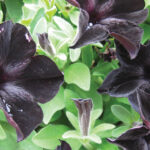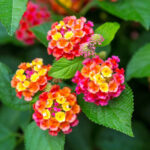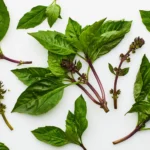
Are you ready to add a splash of sunshine to your garden? 🌼 If you’re yearning for that vibrant pop of color that can uplift your outdoor space, look no further than the radiant world of yellow flowers! From cheerful daffodils heralding spring’s arrival to elegant sunflowers standing tall in the summer sun, these blossoms bring warmth and joy throughout the seasons.
In this comprehensive guide, we’ll explore 10 stunning yellow flowers that not only brighten your garden but also enhance its beauty year-round. Whether you’re an experienced gardener or just starting out, you’ll find inspiration and tips for creating a dazzling display that will leave both you and your guests smiling all year long. Let’s dig in and discover the golden hues waiting to transform your landscape!
Why Yellow Flowers?
There’s something undeniably cheerful about yellow flowers. They bring a burst of sunshine to any garden, lighting up even the gloomiest days. Whether you’re looking to add warmth to your landscape or create an inviting atmosphere, these vibrant blooms are perfect for transforming your outdoor space.
Yellow flowers symbolize joy, friendship, and optimism. Their sunny hues can uplift spirits and brighten moods almost instantly. With so many varieties available throughout the year, it’s easy to find the right ones that suit your garden’s aesthetic while providing visual interest in every season.
Ready to discover some stunning yellow flowers that will make your garden pop? Let’s explore ten fabulous options that promise beauty and cheer all year round!
The Symbolism of Yellow Flowers
Yellow flowers carry a vibrant symbolism that resonates across cultures. They often represent joy, warmth, and positivity. Their bright hue evokes feelings of happiness and cheerfulness.
In many traditions, yellow signifies friendship and new beginnings. Gifting yellow blooms can express goodwill and appreciation without the romantic undertones of red roses.
These flowers also connect to light, reminiscent of sunshine breaking through clouds on a gloomy day. This association makes them ideal for lifting spirits or celebrating life’s milestones.
Furthermore, in some cultures, yellow symbolizes wisdom and clarity. It is believed to inspire creativity and open minds to new ideas.
Whether gracing your garden or featured in arrangements, yellow flowers infuse spaces with uplifting energy while conveying heartfelt messages effortlessly.
Top 10 Yellow Flowers for Year-Round Garden Brightness
Sunflowers are the epitome of summer joy. Their towering stalks and large, vibrant heads turn to follow the sun, bringing a cheerful energy to any garden space.
Daffodils herald spring’s arrival with their trumpet-shaped blooms. They multiply easily and provide a delightful burst of yellow after winter’s chill.
Marigolds shine brightly in borders or containers. With their rich colors and pest-repelling properties, they’re not just beautiful but functional too.
Black-Eyed Susans add charm from late summer through fall. These hardy flowers attract butterflies while creating a warm contrast against green foliage.
Coreopsis brings a delicate touch with its daisy-like petals. It thrives in various conditions, making it perfect for low-maintenance gardens.
Goldenrod is often overlooked yet offers stunning plumes that brighten up late summer landscapes while attracting beneficial insects.
Forsythia bursts forth with bright yellow blooms early in spring, signaling warmer days ahead as its branches fill with life.
Tulips come in endless varieties; their classic elegance makes them beloved by gardeners everywhere during springtime displays.
Daylilies introduce reliable pops of sunshine throughout the growing season. With diverse shades of yellow available, they complement any garden scheme beautifully.
Gerbera daisies offer show-stopping color whether planted outdoors or used indoors as cut flowers, ensuring your spaces remain lively year-round.
1. Sunflowers

Sunflowers are a true garden classic, known for their bold yellow petals and towering stature. These vibrant flowers can reach heights of up to ten feet, creating a stunning visual impact in any landscape.
Their unique ability to follow the sun throughout the day is fascinating. This behavior, known as heliotropism, allows them to soak up sunlight efficiently—a trait that makes them not just beautiful but also resilient.
Planting sunflowers is simple. They thrive in well-drained soil and require plenty of sunshine. Once established, they attract numerous pollinators like bees and butterflies, enhancing your garden’s ecosystem.
With varieties ranging from dwarf types perfect for smaller spaces to giant sunflowers ideal for dramatic displays, there’s a sunflower for every garden style. Their cheerful appearance brings joy and warmth throughout summer into early fall.
2. Daffodils

Daffodils are among the first flowers to bloom in spring, heralding warmer days ahead. Their trumpet-shaped blossoms come in various shades of yellow, often with a vibrant orange center that draws the eye.
These hardy perennials thrive in well-drained soil and can withstand chilly temperatures. Plant them in clusters for a spectacular display that brightens any landscape.
Beyond their beauty, daffodils carry symbolism related to rebirth and new beginnings. This makes them perfect for gardens aiming to evoke feelings of renewal each year.
They’re also low-maintenance, requiring minimal care once established. A little sunshine and occasional watering is all it takes for these cheerful blooms to flourish.
Consider mixing daffodils with other early-spring flowers like tulips or hyacinths for a stunning visual contrast as they emerge from winter’s grasp.
3. Marigolds

Marigolds are a charming addition to any garden, known for their vibrant yellow and orange hues. These hardy annuals thrive in sunny spots and bloom from early summer until the first frost.
Their bright colors not only attract pollinators but also deter pests, making them a gardener’s best friend. Planting marigolds alongside vegetables can help protect crops from unwanted insects.
Caring for marigolds is easy. They flourish in well-drained soil and require minimal watering once established. Just a little deadheading encourages continuous blooming throughout the season.
With various varieties available, you can choose between tall or compact forms to suit your landscape needs. Whether used as borders or in mixed beds, marigolds bring warmth and joy to your outdoor space. Their cheerful presence enhances any garden setting beautifully.
4. Black-Eyed Susans

Black-Eyed Susans are a vibrant addition to any garden. With their sunny yellow petals and distinct dark centers, they stand out beautifully against lush green foliage.
These perennial favorites bloom from summer through fall, providing continuous color when many other flowers fade. They thrive in various conditions, making them easy to grow even for novice gardeners.
Attracting butterflies and bees, Black-Eyed Susans also support local wildlife. Their resilience means they’re drought-tolerant once established, allowing you to enjoy stunning blooms with minimal effort.
Plant these beauties in clusters for an eye-catching display or mix them with other colorful flowers for a diverse palette. They make excellent cut flowers too, bringing warmth indoors while brightening up your space effortlessly.
5. Coreopsis

Coreopsis, commonly known as tickseed, brings a burst of sunshine to any garden. Its daisy-like blooms radiate cheerful yellow hues that can brighten your landscape from late spring through the fall.
This hardy perennial thrives in various soil types and prefers well-drained conditions. Once established, it requires minimal care, making it an excellent choice for both novice and seasoned gardeners alike.
The flowers attract pollinators like bees and butterflies, enhancing the vibrancy of your outdoor space. With its long blooming period and resilience against drought, Coreopsis is perfect for creating a lively display.
Plant them in clusters for maximum impact or use them as borders to add dimension. Their versatility means they can thrive in sunny spots or even partial shade with proper attention.
6. Goldenrod

Goldenrod is a perennial favorite among gardeners looking to add a splash of vibrant yellow to their landscapes. With its tall, slender stalks and clusters of tiny flowers, it creates a stunning focal point in any garden setting.
These hardy plants thrive in various soil types and flourish under full sunlight. Their resilience makes them an ideal choice for both novice and experienced gardeners alike.
Beyond aesthetics, goldenrod plays a crucial role in attracting pollinators such as bees and butterflies. This not only enhances the beauty of your garden but also supports local ecosystems.
A little known fact is that goldenrod blooms late in the summer, extending the color palette as many other flowers begin to fade. Its rich hue can lift spirits even on cloudy days, making it an essential addition for year-round enjoyment.
7. Forsythia

Forsythia is a true herald of spring. With its vibrant yellow blooms, it bursts into life before many other plants wake from winter’s slumber.
This deciduous shrub can grow quite large, often reaching heights of 3 to 10 feet. Its arching branches are covered in small, bright flowers that create a stunning display when they bloom.
Forsythia thrives in well-drained soil and loves full sun exposure. It’s forgiving and resilient, making it an excellent choice for gardeners looking for easy-care beauty.
The cheerful shade of yellow transforms any landscape into a warm invitation for the season ahead. Plus, it’s perfect for hedges or as standalone focal points in your garden.
After blooming, Forsythia’s green foliage continues to provide interest throughout the summer months. This means you can enjoy its beauty long after those first golden flowers fade away.
8. Tulips

Tulips are classic spring-blooming bulbs known for their vibrant, cup-shaped blossoms. Yellow tulips symbolize cheerfulness, joy, and hope.
Growing Tips:
- Soil: Well-drained, sandy or loamy soil.
- Sunlight: Full sun (at least 6 hours per day).
- Watering: Keep soil moist but not soggy.
- Planting Time: Fall, before the ground freezes.
Tulips grow best in cool climates and are excellent for borders, garden beds, or containers. They also make beautiful cut flowers for brightening indoor spaces.
9. Daylilies

Daylilies (Hemerocallis) are among the most versatile and easy-to-grow perennials. The yellow varieties, such as ‘Stella de Oro’ and ‘Happy Returns’, bloom continuously throughout summer.
Growing Tips:
- Soil: Adaptable to most soils, but prefer well-drained soil.
- Sunlight: Full sun to partial shade.
- Watering: Moderate; water when the top inch of soil is dry.
- Maintenance: Remove spent blooms to encourage new growth.
Daylilies are drought-tolerant once established and are perfect for garden borders, slopes, or mass plantings.
10. Gerbera Daisies

Gerbera daisies are prized for their large, brightly colored blooms and long vase life. Yellow Gerberas symbolize positivity, energy, and friendship.
Growing Tips:
- Soil: Slightly acidic, well-drained soil rich in organic matter.
- Sunlight: Morning sun and light afternoon shade.
- Watering: Keep soil evenly moist; avoid watering the crown to prevent rot.
- Fertilizer: Use a balanced liquid fertilizer every 2–3 weeks during active growth.
They can be grown in pots, garden beds, or used as cut flowers to add cheer to indoor spaces.
How to Care for Yellow Flowers?

Soil and Sun Requirements
Most yellow flowers thrive in well-drained, fertile soil and full to partial sunlight. Incorporating compost or organic matter helps retain moisture and improves root health. Always check each plant’s sunlight preference before choosing its location.
Watering and Fertilizing Tips
- Water deeply and consistently, especially during hot weather.
- Avoid overwatering, which can lead to fungal diseases.
- Apply a balanced fertilizer (10-10-10) during the growing season to promote healthy foliage and blooms.
- Mulching helps retain soil moisture and control weeds.
Combining Yellow Flowers with Other Colors in Your Garden
Yellow pairs beautifully with purple, blue, white, and pink flowers. These combinations create visual contrast and balance.
- For a cheerful garden, mix yellow tulips with purple hyacinths.
- For a soft, romantic look, combine yellow daylilies with pale pink roses.
- To achieve a bold, modern display, pair yellow Gerberas with orange marigolds or red zinnias.
Using Yellow Flowers in Floral Arrangements
Yellow flowers make stunning focal points in bouquets and centerpieces. Combine them with white lilies, lavender sprigs, or green foliage for a natural, balanced design.
Use clear or light-colored vases to enhance their brightness and create a refreshing, uplifting atmosphere indoors.
Conclusion: Add a Pop of Sunshine to Your
Yellow flowers bring energy, optimism, and joy to gardens and homes alike. Whether you plant tulips for spring, daylilies for summer, or Gerberas for indoor beauty, these golden blooms are sure to lift your mood and brighten any space. With proper care, they’ll reward you with months of vibrant color and sunshine-filled charm.
Frequently Asked Questions (FAQ) About Yellow Flowers
Yellow flowers generally symbolize happiness, friendship, joy, and positivity. In many cultures, they also represent new beginnings and good luck. Their bright color is often associated with the warmth of the sun, making them perfect for uplifting moods.
Some of the easiest yellow flowers to grow include Daylilies, Marigolds, Sunflowers, and Coreopsis. These plants are low-maintenance, adaptable, and thrive in most climates with proper sunlight and soil conditions.
Most yellow flowers prefer full sun, meaning at least 6 hours of direct sunlight daily. However, some species like Gerbera Daisies do better with morning sun and afternoon shade, especially in hot regions.
Yellow flowers grow best in well-drained, fertile soil. Adding organic compost or peat moss improves soil texture and helps retain nutrients. Avoid heavy clay soil that stays soggy, as it can lead to root rot.
Watering needs vary depending on the plant type and weather. Generally, water deeply once or twice a week, allowing the top inch of soil to dry between watering. Container-grown flowers may require more frequent watering.
Yes, many yellow flowers like Gerbera Daisies and Miniature Sunflowers can be grown indoors. Place them near a bright window with indirect sunlight and ensure proper drainage in their pots to prevent overwatering.

Helen is a passionate gardening writer who finds joy in every season, seed, and sprout. With a love for nature and a knack for storytelling, she shares practical tips and inspiration to help gardeners of all levels create beautiful, thriving green spaces. From organic vegetables to pollinator-friendly blooms, Helen’s writing blends experience with creativity, encouraging mindful, sustainable gardening. When she’s not tending to her backyard garden, you’ll find her exploring local nurseries or sipping tea among her flowers. Helen believes that gardening is more than a hobby—it’s a way to grow joy, purpose, and connection with the earth.











